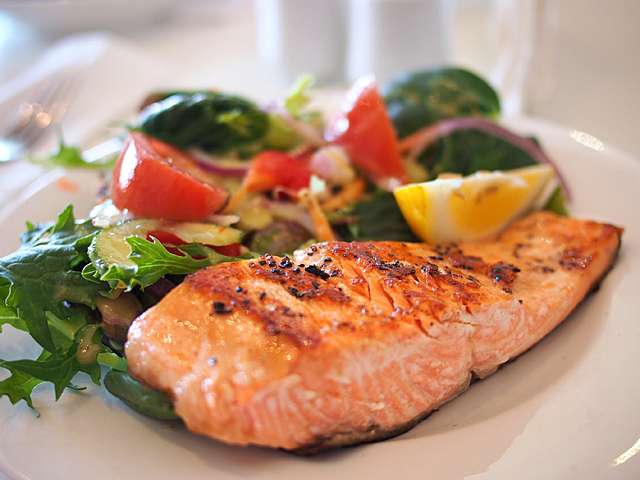Consumers missing out on health benefits of seafood consumption

Seafood, which is defined as both fish and shellfish, is a nutrient-rich protein food, and its consumption has been associated with reduced risk of heart disease. But while most U.S. consumers eat some seafood, the amounts are inadequate to meet federal dietary guidelines, according to a study conducted by Agricultural Research Service scientists.
Seafood contains healthful natural compounds known as omega-3 fatty acids. Two omega-3s—EPA (eicosapentaenoic acid) and DHA (docosahexaenoic acid)—are abundantly available in oily fish such as salmon, mackerel, herring, sardines, anchovies, trout, and tuna. The 2010 Dietary Guidelines for Americans, or DGAs, recommend eating two servings of seafood weekly, or about 8 ounces, to get at least 1,750 milligrams of EPA and DHA weekly.
The study, led by ARS nutritionist Lisa Jahns, was conducted with colleagues at the Grand Forks Human Nutrition Research Center in Grand Forks, North Dakota. The study was based on an evaluation of food-intake data collected from a representative sampling of the U.S. population. That data is collected during the national survey known as "What We Eat in America/NHANES." Because little has been known about how well Americans meet the guidelines for eating seafood, the authors wanted to group people's seafood consumption by sex, age, income, education, and race-ethnicity.
Overall, about 80 to 90 percent of U.S. consumers did not meet their seafood recommendations. The researchers also found that the proportions of seafood consumption varied by sex, income, and education level but not by race-ethnicity. Groups associated with eating less (or no) seafood were women, people aged 19 to 30, and people of lower income and education levels. "Much work remains to move U.S. consumers toward eating seafood at current recommended levels," says Jahns. The scientists published their findings in December 2014 in the research journal Nutrients.
Also at the Grand Forks center, lead author and nutritionist Susan Raatz and colleagues reviewed published studies that explored fish consumption's link to reduced heart-disease risk. They found consistent evidence supporting reduced risk of heart disease due particularly to eating oily fish, which is high in EPA and DHA. In the published study, the authors concluded that getting the message of the benefits of fish consumption to consumers is key, and they suggested a public health education program on the health benefits of eating fish. The study was published in March 2013 in Nutrients.
Recently, USDA's interactive website for helping consumers use the federal dietary guidelines—ChooseMyPlate.gov—launched a board on Pinterest that highlights healthful seafood recipes from a variety of sources.
USDA-ARS provides the science-based food nutrition databases that support the interactive consumer-nutrition resources found at ChooseMyPlate.gov. A 5-ounce serving of cooked farmed Atlantic salmon provides about 290 calories and more than 1,800 mg of omega-3s. A 4.5-ounce serving of cooked, farmed rainbow trout provides 214 calories and about 1,115 mg of omega-3s.
More data on the nutrient content of seafood can be found in the USDA National Nutrient Database for Standard Reference.


















